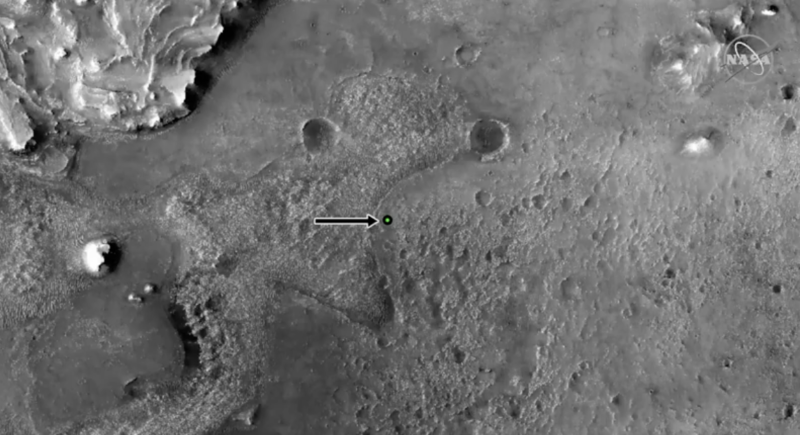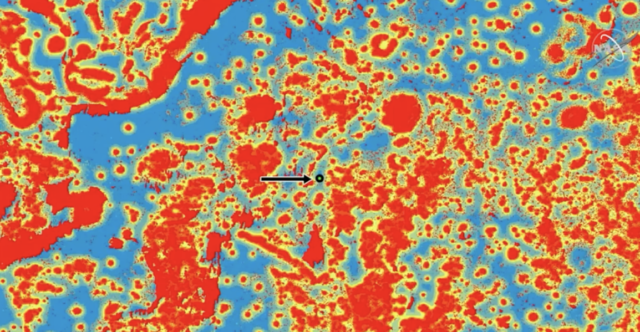Waiting for video —
NASA’s first chat about its newest rover talks about the landing and what’s next.
John Timmer
–

In their first press conference following Perseverance’s successful landing on Mars, NASA and JPL scientists revealed some information on where the rover landed and what to expect for the next several days and weeks as it begins its mission in earnest.
Pics or it didn’t happen
One of the first orders of business is getting some of the images, audio, and video taken during the landing back to Earth. For now, doing so requires using a low-gain antenna to transmit data to some of the hardware in orbit around Mars. Jennifer Trosper, the deputy project manager for the rover, said that the Mars Odyssey orbiter should pass overhead briefly within the next few hours, followed by the Mars Trace Gas orbiter, which will have a longer overflight and grab larger amounts of data. Matt Wallace, another deputy project manager, said that should be enough to allow NASA to release video of the landing on Monday.
Longterm, however, communications will rely on a high-gain antenna that will allow direct communications with Earth. That will require pointing, which means understanding the rover’s current orientation on Mars’ surface, which the team has inferred from the shadows cast in the first images sent down. Incidentally, those were taken with transparent lens caps on the Perseverance’s navigation cameras, so we can expect better images once those are removed.
Better images will require getting the mast with the main imaging camera extended, as the camera and the high-gain antenna are currently tucked in against the rover’s body in their in-flight position. Both of those should be raised into position over the next couple of days.
We have an even better idea of where the rover is than we do of its orientation. Al Chen—who led the Entry, Descent, and Landing team—said the rover touched down about 1.7km from the center of its intended landing area. He noted that Perseverance landed in what he called “a fairly rugged area.” Showing the image below, he said that the blue areas were considered acceptable for landing, yellow is iffy, and red presented areas where there was at least a 4 percent chance of dropping the rover onto something unfortunate.

Enlarge / For landing, red’s bad, blue’s good. The onboard software nailed the landing.
NASA/JPL
As you can see, the software managed to place the rover in a relatively narrow channel of blue surrounded by red—”we did successfully find that parking lot,” Chen joked. The rover also ended up nearly perfectly upright, with a tilt of only 1.2 degrees.
While the rover itself is on excellent terrain, a field of rippled sand was visible in the first images to come down. “We might have to drive around the ripple field,” Trosper said. “We don’t like sand ripples much.”
Remote software updates
Driving won’t happen right away. After spending a couple of days checking out instruments, Trosper said the next big step is putting the driving and navigation software on the robot—software that was still being worked on while the rover was traveling to Mars. Obviously, this transfer is done very cautiously, and the team expects to spend four days updating and validating the software before starting any actual driving.
Once driving starts, the focus will be on testing out the helicopter drone that the rover carries. This requires a flat spot that meets a set of specific conditions. Once a site is located, the rover has to drop the drone off and then move away before it can be tested. Trosper expects that Perseverance will need about 10 Martian days to get the drone ready to fly, followed by 30 days spent testing and using the drone to explore the immediate surroundings.
It’s likely that, immediately after this process, the rover will start sampling some of the rocks in its immediate environment.
Ken Farley, a project scientist from Caltech, said the areas around the rover could be of interest. That’s because there’s a clear difference between where the rover is and the dunes that the team wants to avoid driving through, and that difference lines up with indications of different mineral compositions in data obtained from orbit. Those sorts of geologic transitions can be informative about an area’s history, so the team will want to check that out.
Looking ahead
But longterm, the goal is for Perseverance to drive to what appears to be a delta to the northwest (in the upper-left corner of the image at top). This delta is the product of water flows during the time of Mars’ early, wet periods, and it should provide lots of opportunities for gathering samples for an ultimate return mission that’s still in the planning phases. The delta is about two kilometers away from where the rover is now, so there are plenty of opportunities for serendipitous discoveries along that drive.
But for now, the key efforts will involve checking out the equipment and getting the high-gain antenna working.
Beyond all the plans for the rover, everything was made more difficult by the challenge of running the whole operation during a worldwide pandemic. The mission control, instead of being packed with excited scientists and engineers, was sparsely populated by people wearing masks and maintaining social distance. Most of the team showed up in a massive Zoom group. Trosper talked about how hard it was to do her job while working in her laundry room (which ended up being needed for actual laundry at inopportune times) while her kids were in “Zoom school” elsewhere in the house.
While the rover was already in Florida getting prepped for launch, the team decided to attach a plaque commemorating the pandemic. Maybe the plaque will survive long enough on Mars’ surface to remind someone in the future that Perseverance was one of the bright spots in an otherwise difficult time.

